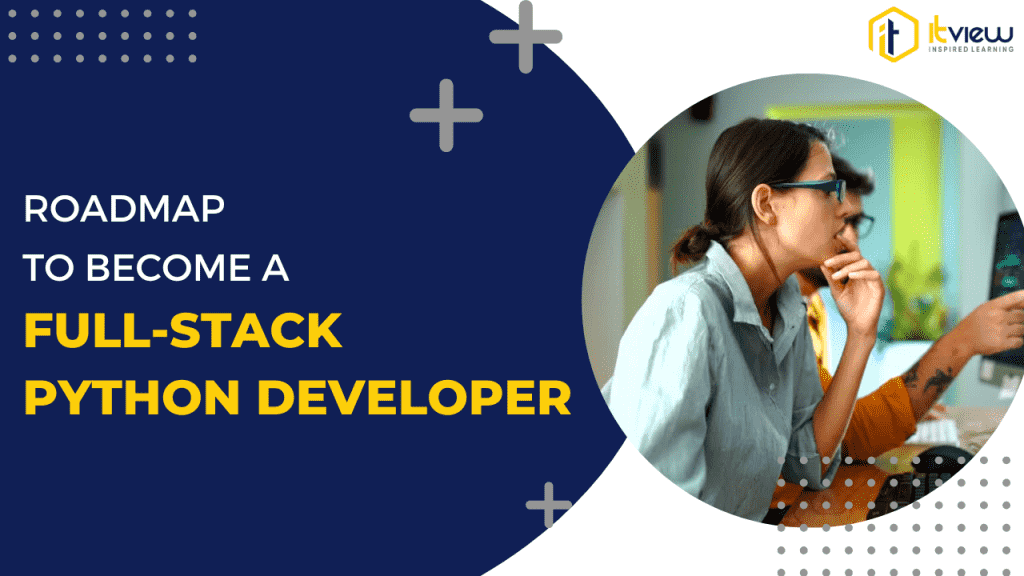In today’s tech-driven world, full-stack development is one of the most in-demand career paths—and Python is at the center of it. If you’re searching for the best Python full stack development course or wondering what a Python full stack developer course syllabus includes, you’re in the right place.
This guide covers everything you need to start your career with a full stack Python developer course—from core technologies to hands-on projects.
What is a Python Full Stack Developer?
A Python full stack developer is skilled in both frontend and backend web development. They build complete web applications—from designing user interfaces to managing servers and databases—primarily using Python and modern frameworks.
Python Full Stack Developer Course Syllabus Overview
If you’re considering a Python full stack course, here’s what a typical syllabus includes:
🔹 1. Frontend Development
HTML5 and CSS3 – Used to build and design the layout and appearance of web pages
JavaScript (ES6+) – Core scripting and interactivity
Frontend Frameworks – React.js, Bootstrap, or Tailwind CSS
Responsive Design – Mobile-first UI practices
🔹 2. Backend Development with Python
Core Python – Covers syntax basics, object-oriented programming, file operations, and error management
Django & Flask – Develop powerful web applications and RESTful APIs
FastAPI – High-performance API development
REST APIs – Creating and consuming APIs
🔹 3. Database Management
Relational DBs – MySQL, PostgreSQL
NoSQL DBs – MongoDB
ORMs – Django ORM or SQLAlchemy for data interaction
🔹 4. Version Control & Collaboration
Git & GitHub – Source control, branches, and teamwork
Agile & SCRUM Basics – Common in real-world projects
🔹 5. Deployment & DevOps Basics
Web Hosting – Using Heroku, AWS, or Azure
Containers – Docker fundamentals
CI/CD Concepts – Automation pipelines
🔹 6. Capstone Projects & Portfolio Building
E-commerce platforms
Blog systems
Task management apps
Full-stack dashboards
Why Enroll in a Python Full Stack Development Course?
A structured Python full stack development course ensures you don’t miss any critical skills. Here’s why it’s worth your time:
✅ Beginner-Friendly Learning Curve
✅ Project-Based Approach for Real Experience
✅ Covers All In-Demand Tools in One Track
✅ Boosts Job Readiness & Portfolio Strength
Practical Steps to Become a Job-Ready Python Full Stack Developer
Learning theory is important, but practical experience is what makes you stand out in interviews. Here’s what students must focus on beyond just following a course:
1. Build Real-World Projects (Even If They’re Dummy Projects)
Creating projects is the most effective way to practice what you’ve learned and show your skills.
Recommended Dummy Projects:
A blog website with Django (CRUD operations, user authentication)
A task management app using Flask + React
An e-commerce app with cart, login, and checkout features
A portfolio site to showcase your resume and projects
A weather app using external APIs
A job board or event listing application
📌 Tip: Host your projects on GitHub and deploy them on Heroku, Render, or AWS to share live links in your resume.
2. Create a Portfolio Website
Build a personal website that includes:
Your introduction
Project links with live demos
Resume download option
GitHub and LinkedIn links
This shows employers that you are serious and ready to work on real problems.
3. Practice Git & GitHub Daily
Many interviews check your ability to use Git (version control). Learn to:
Create branches
Make commits
Push to GitHub
Handle merge conflicts
✅ Pro tip: Always push your code from projects to GitHub as proof of work.
4. Work on API Integration
Knowing how to consume APIs (like weather, news, or payment APIs) is a must. Practice:
Fetching external data using Python or JavaScript
Displaying API results on frontend (React or vanilla JS)
Securing API keys properly
5. Database Practice with Real Use Cases
Don’t just read about databases—use them. Practice:
Designing relational database models (e.g., user, product, order)
Connecting your Django/Flask app to PostgreSQL or MongoDB
Running complex queries and joins
Performing migrations
6. Deploy Your Applications
Deployment is often ignored by beginners, but it’s critical.
Practice using:
Heroku or Render for smaller apps
Docker to containerize your app
AWS EC2 or S3 for more advanced deployment scenarios
This shows you can take an idea from start to finish.
7. Mock Interviews and Coding Challenges
Before applying for jobs, it’s important to test your knowledge and build confidence. Spend time on:
Solving Python coding problems on platforms like LeetCode, HackerRank, or Codewars
Practicing SQL queries, especially JOINs and subqueries
Reviewing common Python and web development interview questions
💡 ITView offers mock interview sessions designed to simulate real technical interviews. These sessions help students practice both coding and communication skills, identify areas of improvement, and build confidence for actual job interviews.
✅ Pro tip: Treat mock interviews seriously—they can be the difference between “almost hired” and “you’re hired.”
8. Understand Software Development Best Practices
Employers often check for clean, well-documented code.
Learn to:
Write readable code (PEP8 for Python)
Use docstrings and comments wisely
Break large code into smaller, reusable functions or modules
Follow MVC architecture (especially in Django)
9. Collaborate on Open Source or Group Projects
Working on a team project teaches:
Task breakdown and role assignment
Git collaboration (pull requests, branches)
Real-world communication and teamwork
You can find beginner-friendly open-source projects on GitHub under “good first issue” tags.
10. Prepare for Behavioral & Technical Questions
Employers may ask:
“Tell me about a project you built”
“What challenges did you face and how did you solve them?”
“How do you debug your code?”
“How do you secure a web application?”
Being able to talk through your code and thought process is just as important as writing it.
🚀 Conclusion: Start Your Journey Today
A Python full stack developer course is your gateway to a high-demand career. With the right syllabus, practical training, and project work, you can transform from a beginner into a job-ready developer.
Ready to get started?
Choose a course that fits your goals and begin your journey today with a structured Python full stack development roadmap!

